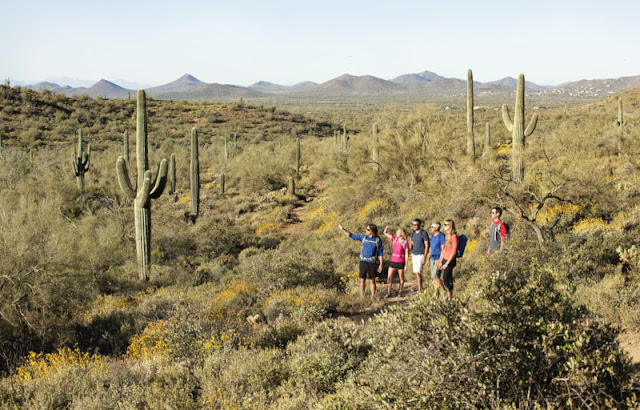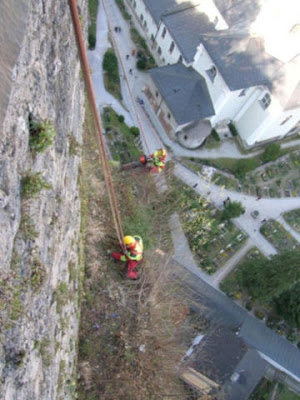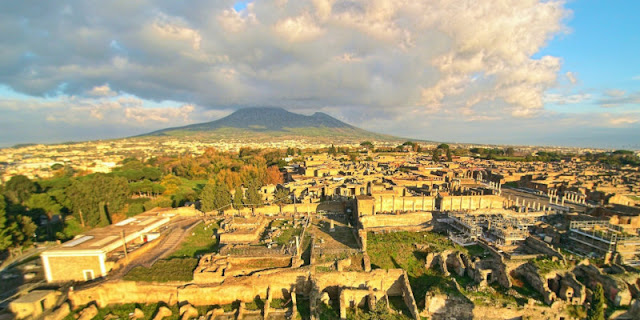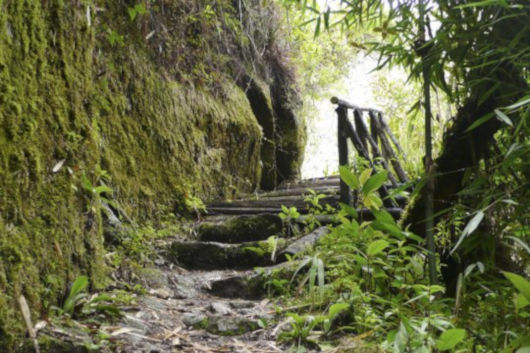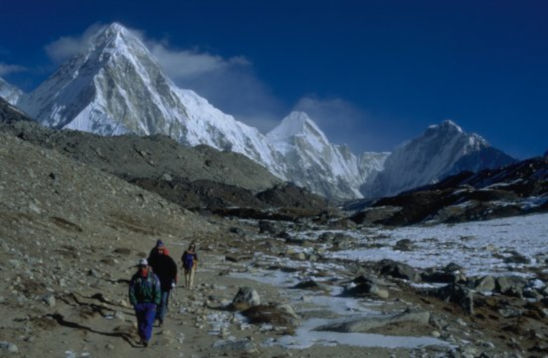Trekking on the classic Inca Trail to Lake Titicaca
- 4-day trekking Inka Trail (about 5 - 8 hours daily)
- Hikes 2 x easy (2 - 3 hours), 3 x moderate (4 - 5 hours)
- In the footsteps of the Incas - on the most beautiful way to Machu Picchu
- Walk across the island of Taquile with panoramic views of Lake Titicaca
- Get to know the culinary delights of Peruvian cuisine during a cooking class
- Stroll through the narrow streets of the Inca capital Cusco
- Explore the mystical legend of the Inca site Machu Picchu
Like the mystical Inca site Machu PicchuEven the way to her - hidden away from the wild mountain forest - was a mystery for a long time. From Cusco, numerous paths through Peru and neighboring Bolivia, Ecuador and Chile have already taken place during Inca times. The most famous among them has for ages united the Sacred Valley with Machu Picchu, the city in the clouds. In the last century, the Inca Trail was rediscovered and uncovered.

Following in the footsteps of the Incas, we hike the cobbled path through the middle of the Andes, past archaeological sites, snowy Andean peaks, over streams and rivers. We cross vertiginous suspension bridges, continue over rock-cut steps into the deep jungle, and then suddenly hit a wall: in front of us the sun gate!Carefully, we walk through and have a fabulous view of the world heritage site before us: Machu Picchu. All hardships and sweat drops are forgotten, we put down the backpacks and enjoy the magical moment. Important Booking Note: Is this the adventure you have always dreamed of? Then follow our advice: book as early as possible! The places on the Inca Trail are sought after and limited. Already around six months before the trip we have to decide if the trip actually takes place.
Planned program sequence
(Meals: F = breakfast M = lunch A = dinner)
Day 1: Arrival to Peru
Departure in Germany and flight to Peru.
Day 2: Arrival in Cusco
We land in the Peruvian capital Lima. After the immigration formalities we fly on to Cusco (3.400m). Here we are received by our tour guide. The afternoon is free for us to slowly gain altitude.
Hotel Samay (F), Cusco
Day 3: Cusco city tour and Inca culture
In Cusco, the juxtaposition of two cultures fascinates. Once, the Inca rulers built temples and numerous palaces for their families. After the conquest, the Spaniards shaped the image of the city. On our city tour we will get to know the center of the UNESCO World Heritage City, the lively Plaza de Armas. We visit the main market as well as the artistic district of San Blas and the cathedral. The ruins of Tambomachay, Sacsayhuaman and Qenko are also on the program. The afternoon is at our free disposal.
Driving time: approx. 1 hr.
Driving distance from: approx. 30 km
Hotel Samay (F), Cusco
Day 4: Excursion to Tipón
Today a secret tip awaits us: we make our way to the Inca site Tipón in the south-eastern valley of Cusco. Tipón is located on the slopes of Mount Pachatusan, the main apu (mountain deity) of Cusco. In total there are 12 larger terrace units to see. These are well preserved and made of red stone. We walk to an elevation where religious ceremonies used to be held, and from here we have a view of the whole area. Past the terraces we go to a natural spring that irrigates the terrace structure through an extensive canal system. Return to Cusco and afternoon free.
180m
Walking time: approx. 2-3 hours
Travel time: approx. 0.5 hrs.
Driving distance from: approx. 25 km
Hotel Samay (F, M), Cusco
Day 5: Sacred Valley - Ollantaytambo
After breakfast we drive to Pisac to the big Indian market. Here a lot of crafts, fruits and vegetables are offered. We also visit the legendary Inca terraces of Pisac that tower over the village and then hike back to the village. After lunch we drive through the sacred valley in a westerly direction, along various villages until we reach the "living" Inca village Ollantaytambo. We visit the Inca fortress and walk through this beautiful settlement to our hotel.
200m
Walking time: approx. 2-3 hours
Driving time: approx. 1 hr.
Driving distance from: approx. 70 km
Hotel Tunupa (F, M), Ollantaytambo
Day 6: Trekking start on the Inca Trail
Today begins our adventure on the Inca Trail. We get up early and drive the short distance to Chilcha to the "kilometer 82". Here begins our trekking on the legendary Inca Trail, the historic route from Cusco to Machu Picchu. First, we follow the course of the Rio Urumbamba downstream to the Inca ruins of Llactapata. After the visit, we will build our tent near the small community of Chamana.
780 hm
Walking time: approx. 4 hours
Travel time: approx. 0.5 hrs.
Driving distance from: approx. 11 km
Tent (F, M, A)
Day 7: 2nd trekking day: Llaqtapata - Llulluchapampa
After breakfast we walk in the shadow of the mountains through the Cusichaca valley, past small farms until we reach the Andendorf community Huayllabamba. Here a steep ascent awaits us until we set up our next camp below the first pass we will cross tomorrow. We have a breathtaking view of the mountain Huayanay (5,464 m) in front of us. On the slopes grow in the fog the rare Polylepis, a unique rose plant. We end the day with a dinner together.
1250m
Walking time: approx. 6-7 hours
Tent (F, M, A)
Day 8: 3rd trekking day: Llulluchapampa - Phuyupatamarca
Today, the long ascent to the highest pass of our trek, the Warmiwañusca Pass at 4,200 m. Above we enjoy the view of the snow covered high mountains of the Cordillera Urumbaba. We cross the pass and descend again to the Pacamayo River, where we can refresh ourselves briefly. About the Runkuraqay ruins it goes to the Qachapatta Pass at 4,050 m. Descent to Yanacocha Lagoon. Then it goes over steep stairs uphill and downhill through the lush vegetation to the Inca fortifications Sayacmarca and Ayacmarca. We continue to our camp at Phuyupatamarca with a beautiful view of the Urubamba valley. In the distance we can already see Machu Picchu.
860 meters
1050 Hm
Walking time: approx. 8-9 hours
Tent (F, M, A)
Day 9: 4th trekking day: Phuyupatamarca - Machu Picchu
We start early and master the descent to the 3rd and last ascent to the pass Phuyupatamarca (3.700 m). At the top, a wide panorama opens onto the Cordillera Vilcabamba. Long descent over a steep natural rock spiral staircase through dense jungle until we reach the vegetation-overgrown Inca sites Intipata and Winay Wayna (2.700m). After a short visit, we continue through the cloud forest to Intipunku, the sun gate. We walk through the gate and have a gigantic view of Machu Picchu. We have to be patient, because we will visit the UNESCO World Heritage site tomorrow with more time. We get off briefly and take our bus, which brings us to Aguas Calientes.
150m
1370m
Walking time: approx. 6-7 hours
Travel time: approx. 0.5 hrs.
Driving distance from: about 8 km
Hotel Hatun Samay (B, L), Machu Picchu Pueblo
Day 10: Machu Picchu in the early morning
In the early morning we take the bus over serpentines through dense forest up to Machu Picchu. The whole morning we visit in detail and under expert guidance the mysterious jungle town Machu Picchu. UNESCO designated the ruins in 1983 as a cultural and natural heritage of humanity. The sight of the ruins in the middle of a wild mountain landscape is overwhelming. Long after the arrival of the Spaniards in 1911, Machu Picchu was discovered and uncovered by Hiram Bingham. In the afternoon the bus brings us back to Aguas Calientes. From here we take the train to Ollantaytambo and from there by bus to Cusco.
Walking time: approx. 2-3 hours
Driving time: approx. 2 hours
Hotel Samay (F, M), Cusco
Day 11: Cusco
Today is at leisure. We can stroll through the city on our own and discover yet unknown lanes in Cusco.
Hotel Samay (F), Cusco
Day 12: Cusco - Puno
We leave Cusco and drive to Lake Titicaca. We take the approximately 390 km long and scenic route back by bus. On the way we stop at the sights of Andahuaylillas, Racchi and Pucara. Crossing the Altiplano highlands we see small villages and on the horizon the glaciated mountain ranges. Important note: When traveling with a small group of less than 8 people, the journey from Cusco to Puno takes place on a comfortable public tourist bus.
Driving time: approx. 8 hours
Driving distance from: about 420 km
Hotel Intiqa (B, L), Puno
Day 13: Excursion on Lake Titicaca
After breakfast, a motorboat takes us across the deep blue lake of Lake Titicaca to Taquile, a tranquil island of livestock and agriculture that is characterized by communities with "Cooperativas" (cooperatives). From the pier we hike over the island. The islanders are good weavers and also produce the finest knitwear. By boat we drive back to Puno. On the way we dock at the floating reed islands of the Uro. Once the Uros Indians led an almost self-sufficient life on their reed islands. The floating islands on which the individual families live are made of tied bundles of reed bundled together in blocks of up to 8 square meters. Boat trip about 4 hours
150m
150m
Walking time: approx. 3-4 hours
Hotel Intiqa (F, M), undefined
Day 14: Puno - Lima
We first visit the mysterious grave towers of Sillustani, near Puno. Sillustani is located on a peninsula on Umayo Lake and was one of the most important centers of the Colla culture. Then transfer to the airport in Juliaca and flight to Lima. Transfer to the hotel.
Travel time: approx. 0.5 hrs.
Driving distance from: about 20 km
Hotel Lima Wasi (F), Miraflores
Day 15: Lima - return flight to Germany
In the morning we get to know the metropolis Lima on a small city tour. The palace of the viceroy, the palace of the archbishop and many churches and convents. We stroll through the colorful local market. Our tour guide shows us the variety of exotic fruits. Afterwards, we get to know the local products during a cooking class to conjure up a typical Peruvian dish at our cooking class. In the afternoon transfer to the airport. Flight from Lima back to the homeland.
Day 16: Arrival at home
Arrival at the home airport.



